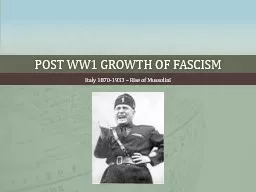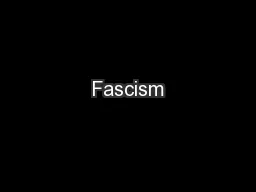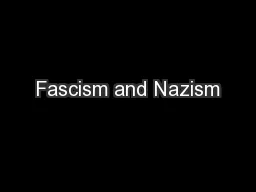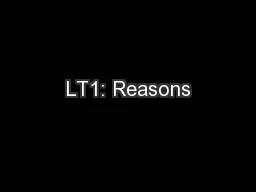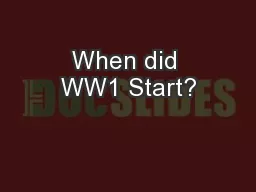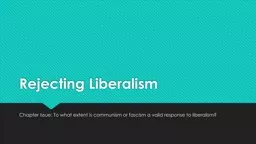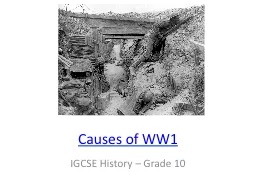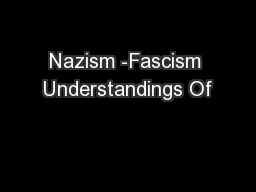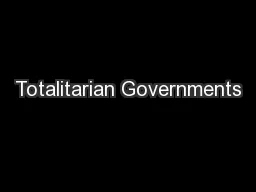PPT-Post WW1 Growth of Fascism
Author : myesha-ticknor | Published Date : 2017-04-21
Italy 18701933 Rise of Mussolini Pgs 8297 Pre ww1 Italian Rule Italy had only become a unified state in 1861 with the Papal States joining in 1870 The period of
Presentation Embed Code
Download Presentation
Download Presentation The PPT/PDF document "Post WW1 Growth of Fascism" is the property of its rightful owner. Permission is granted to download and print the materials on this website for personal, non-commercial use only, and to display it on your personal computer provided you do not modify the materials and that you retain all copyright notices contained in the materials. By downloading content from our website, you accept the terms of this agreement.
Post WW1 Growth of Fascism: Transcript
Download Rules Of Document
"Post WW1 Growth of Fascism"The content belongs to its owner. You may download and print it for personal use, without modification, and keep all copyright notices. By downloading, you agree to these terms.
Related Documents

